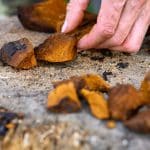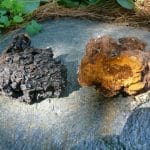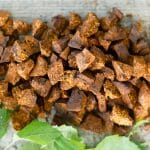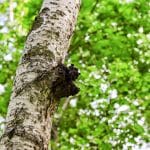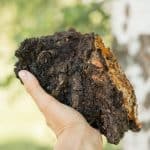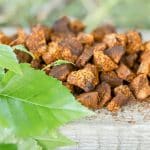Use of Chaga Mushroom in the Northern Hemisphere
After years of using the famous Chaga as a medicine in the Northern Hemisphere, it has finally found its way to the dinner table in countries around the world and is valued for its many health benefits. The chaga mushroom is also known as Inonotus obliquus, although you won’t often find it at health food stores or as a supplement. Quantifiable quantities of Chaga mushrooms have been found in Finland (chaga known as pakuri), Russia, Kazakhstan, South Korea, Belarus, Canada, Scotland, North America, and northern and eastern Europe.
Chaga mushrooms grow on birch trees in parts of the Northern Hemisphere, including Europe, Asia, Canada, and the northeastern United States. Chaga is commonly found on birch trees in the northern hemisphere, where it grows in symbiosis and absorbs powerful nutrients from the birch. Chaga cannot grow on its own, but is found on birch trees.
Where can I find Chaga in the Wild?
Instead of growing from moth larvae, chaga settles on the trees of the birch forest. While chaga is known to grow on many types of trees, we only use chaga mushrooms that grow on white paper arctic ring birches and Mount Everest in Nepal. As a parasitic fungus, chaga grows primarily on birches in colder climates such as Canada, Siberia, Scandinavia, and parts of the United States.
You can find our favorite capsules, powders, and tincture’s on the following pages of our website and learn more about each individually:
Best Chaga Mushroom Supplement
The Chaga mushroom, Inonotus Obliquus, is a living, barren conch that grows on birches and other trees in temperate forests of the Northern Hemisphere. Chaga is the common name for perennial canker, or sterile konka, that usually develops on birch trees (Betula papyrifera, paper birch) after infection and colonization by the mycelium of the pathogenic fungus Inonotus obliquus. What we call chaga is a dense black substance that can be seen on trees (almost exclusively on birches) infected with the fungus Inonotus obliquus.
The chaga fungus takes root in birch trees and expands outward over time, forming charred, raised masses on the outside of the tree. Chaga naturally spreads over a large area of the Northern Hemisphere.
Known as Poashkan or Wiskakecakomikih in the Cree regions, this mushroom has been collected and used medicinally by many of Canada’s indigenous peoples. As part of traditional herbal medicine and folk medicine, chaga mushrooms have been used for hundreds of years in places like Russia and the Nordic countries. There is evidence that chaga has been used in Chinese medicine for thousands of years.
Chaga has been used for centuries by people from all over the world – all over the Northern Hemisphere. Used in Canadian Aboriginal culture, First Nations believed in the wisdom of chaga and birch and have used chaga for centuries. Most common in Russia, northern Europe, Canada and Alaska, a significant amount of chaga is found in the northern states of the continental United States.
Unfortunately, due to the commercialization of chaga, the future of the king of mushrooms does not look bright. Instead, the chaga fungus parasitizes the boreal birch trunk; bulbous, black and more like bark than mushrooms. Shortly before or after the death of the trees, the mycelium will begin to produce a fungus (fruiting body) so that the spores can be released and the chaga can reproduce.
Additional Resources:
Does chaga mushroom clear toxins?
Updated 10/24/2022







